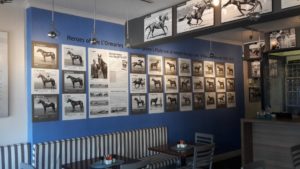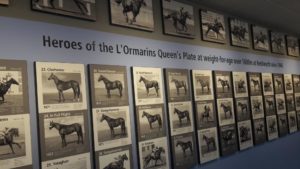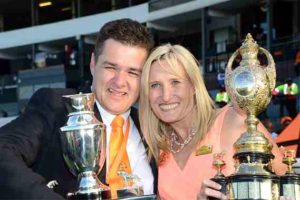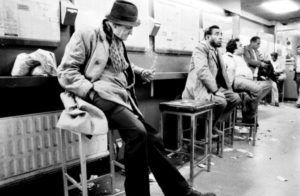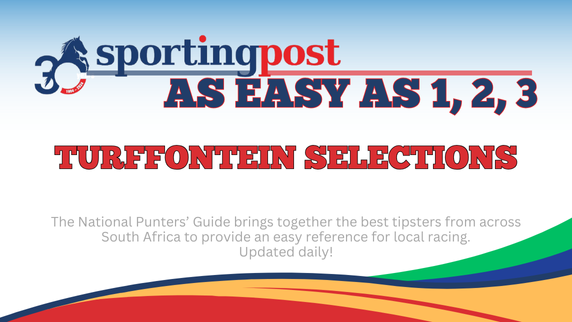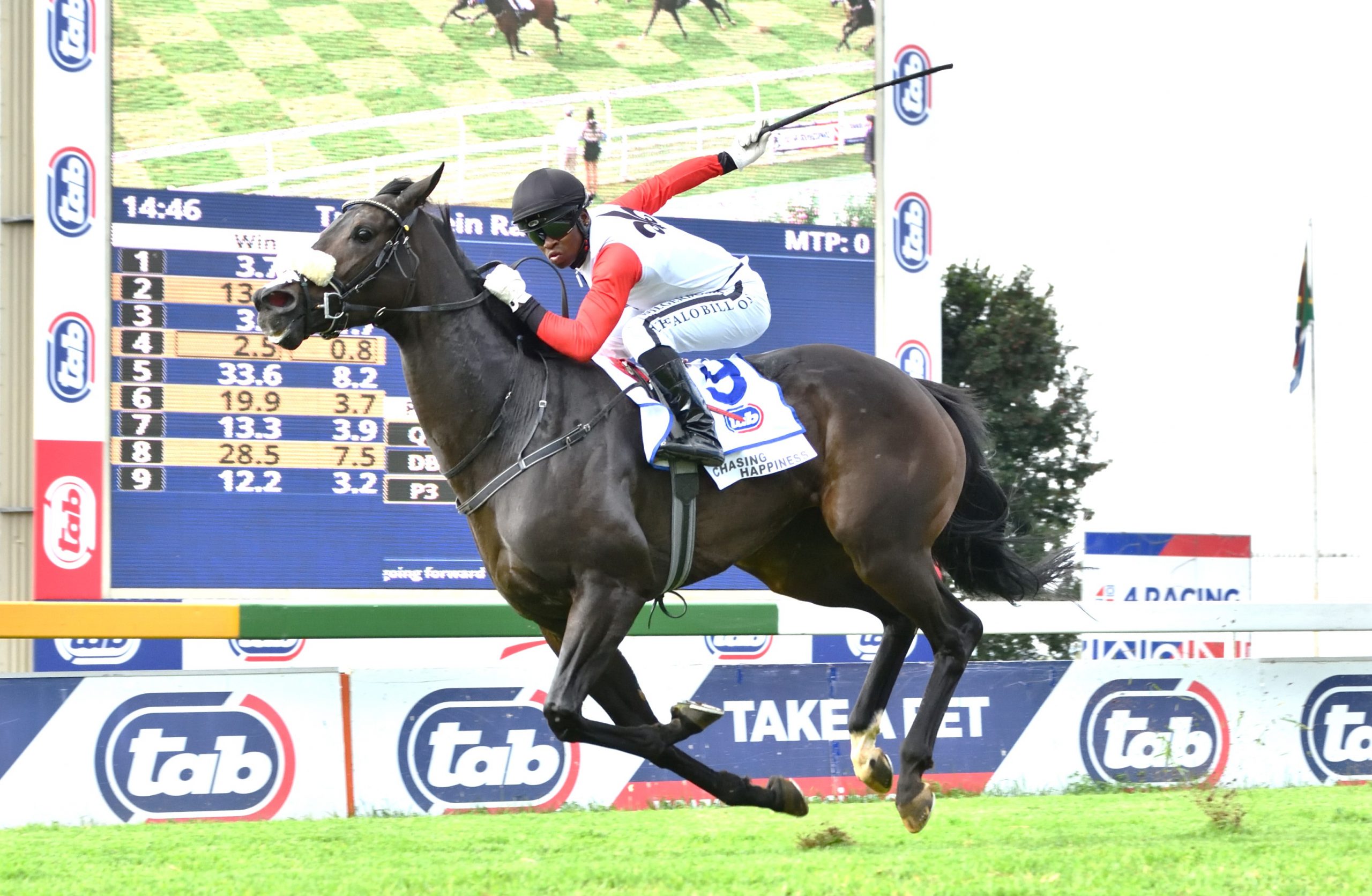I caught up with this years’ Equus Award winner for print media, Charles Faull at the Heroes Bar on 2nd Avenue Claremont which, with the kind permission of proprietor Tony Mason, Charles has turned into a shrine to horse racing and the Queen’s Plate in particular. The interior of Heroes, along with his Queen’s Plate wall at Kenilworth and the history component of two articles run by the Sporting Post made up Charles’ winning submissions to this year’s Equus Awards panel. An evening with Charles, as always, made for a thought-provoking experience.
Thank you to Equus
“Firstly I’d like to thank the Equus panel for the award. Lee Iacocca said ‘you serve yourself best by serving your industry first’. I don’t mind saying that it cost me personally to do Heroes, but I’ve dedicated my life to the sport and have nothing but a huge library of books and photographs to show for it – I wanted to leave a more lasting legacy. I also have to make the point that the success of Heroes is due to the integrity of the work – it was done properly, by the best in the business (Jill Paynter and Jacqui Smit who are, masters in their respective fields, and the production team at Orms and Jason Ormrod in particular for busting a gut to ensure that everything went smoothly). If the work had not been sensitively and carefully handled and wasn’t of the highest standard, it simply would not ring true.” As always, Charles is right. The quality of the work is exceptional, but better than that, it has the desired effect. Heroes is a fairly cosy space and because fellow diners are in close proximity, it is hard not to eavesdrop accidentally and it was fun to hear other patrons marvelling at the photographs and retelling stories of the races they’d watched and horses they’d followed. It made me want to jump up and tell them that the man responsible was sitting right there (in fact, I did a few times!).
While there is no questioning both the beauty and the success of the initiative, given the state of racing – and also how racing has treated Charles over the years – it begs the question why. He answers, “During a recent interview at Epsom, Bernard Kantor said ‘If you want to build your business, link your brand to a great piece of history.’ Twelve years ago Gaynor Rupert decided to link L’Ormarins with the Queen’s Plate because she believed it to be the most important race in the country. The Queen’s Plate has been run every single year since 1861, making it one of the longest running sporting events in the country. It’s been run over various distances and conditions, but since 1948 it has been run over a mile at weight-for-age. If you look at the first 4 past the post since 1948, it is by a country mile the most important race in the country. Gaynor felt it was important to get the history into real space, which spawned the restaurant and the wall and has now won the Award, so I am grateful to the RA for acknowledging the Gold Standard attained by the L’Ormarins Wall of Fame.”
But rather than basking in any glory, as always Charles has bigger issues on his mind. “Having discussed the most important race, let’s look at what is regarded as the greatest race in Africa – the Durban July – does it live up to the hyperbole? The July has been run as a handicap for over 100 years, making the decision of the distribution of the biggest prize money in the country dependent on the opinion of 1 or 2 people (handicappers), rather than the terms that would ensure that merit was rewarded in direct proportion to its magnitude (in other words, weight-for-age). At weight-for-age, seeing is believing. In handicaps it is not, which is why it’s so important that we explain why.”
“To give you an example, if I were asked to name the 20 greatest horses South Africa ever produced, Jerez would be up there. And yet, his three placings in that race diminished his importance in the eyes of the world, even though he punched well above his weight on all three occasions. And he’s not the only one. William Penn, Yard-Arm, the list goes on. Great horses, butchered. Over the years, the July has systematically degraded, humiliated and embarrassed our great champions.”
Another brutal July
“The purpose of our industry is to breed a better horse than last year. The Durban July is the focal point of the season. It is the pinnacle of all the dreams and sees the confluence of billions of rands worth of investment, breeding, hours of training, dreaming and aspiring. Given its position of prominence, the question we need to ask is whether our operators do a proper job with it? Has what’s gone before presented proper guidance to the man in the street? I think the answer quickly becomes obvious – we may as well bring back Chuck ‘Em Bonesey.”
Seeing the July through Charles’ eyes
Charles has his own interpretation of the official Weight-for-Age scale, developed over years of form study. He feels the original scale is not correct and has taken into consideration the thinking of John Mort Green (of ‘Come Fly with the Butterfly’ fame) and added his own adjustments. “Let’s look at this year’s race. Despite the fact that he was 7th across the line, Abashiri won this July on WFA merit. The Conglomerate won the July on the line, but on merit he was only 10th. I’m not taking away from The Conglomerate, he won the race fairly according to the handicap, but like so many years before, the result is not a true picture of what really happened. The hero here is Abashiri! He wins the Triple Crown, he carries top weight and he puts up the run of the race (with Bela-Bela not far behind) but thanks to the handicappers and the fact that so few people understand the effect of weight, the perception is that those horses ran a ‘bad’ race. And unfortunately due to that misunderstanding, that perception becomes reality and very few are any the wiser.”
“I have never seen more damage done, than that by our Operators in their own publications before this July – and every previous one. It was obvious to form studiers that the handicapper had done a terrible job. Now I’m not trying to be clever after the event – Form sent out a newsletter prior to the July which stated that you ignore The Conglomerate at your own peril. Let’s examine why.”
The Conglomerate
“Form is the applied study of trend and formula co-mingled with pedigree. So let’s start with pedigree. The Conglomerate is by Lonhro, who was nicknamed “The Black Flash”. In his career, Lonhro won 26 races of which 25 were stakes races. Of those, 11 were Gr1’s. Five of those races were run over 2000m (that was the furthest he was ever tried). He was the world champion 2000m horse of his time.”
“The Conglomerate is out of champion staying mare Republic Lass, who won the Gr1 Australian Oaks over 2400m. Republic Lass is by Canny Lad (also the damsire of Redoute’s Choice – and may I please point out that he is named for the artist and it is pronounced Redoo-tay – not Redoot). So we are looking at a son of Lonhro out of what is probably Canny Lad’s best performed daughter. What a shame the horse had to be gelded.”
“The Conglomerate had been tried over his optimum distance twice in his life – the first time was in the 2015 Daily News where he finished 2.5 lengths off French Navy at level weights. The second time was in the 2015 Vodacom Durban July, where he met terrible traffic and had to switch in and out several times down the straight and yet still finished 5 lengths off them.”
“Given that 1.5 lbs equals a length, on his 2015 Daily News form, The Conglomerate had French Navy stone cold at the weights for this year’s July. In all his prep races, he’d been flying at them over distances short of his best. And yet, his pedigree was never discussed by the official printed organs of the operator, which are (or should be) there to guide their customers professionally and thoroughly. The Conglomerate was not mentioned in the TAB sheet, the Computaform or the Racegoer and did not get a mention by the Tellytrack commentators before and on July day. In short, he was considered a ‘non-runner’ by officialdom who were instead touting the two horses with the least chance at the expense of horses that were better in at the weights.”
Being Charles, he has collated all the above in a thick folder bristling with notes and annotations. He is correct – there is scant mention of The Conglomerate. In fact, the Computaform ‘Guide to the R15-m TAB Pick 6’ is lucky to mention a single race winner. “This happens year after year. I have to ask, who is responsible?”
“In the hearts and minds of our patrons, we are creating a big expectation. It’s the July. It’s a big day. There’s lots of excitement. That’s fine. But when we invite the general public to exercise skill and knowledge in their quest to spend little to win a lot, we have a fiduciary duty to guide them expertly and accurately. If we cannot do that, we should not be giving tips to people whose money we are taking.”
Tellytrack
“Soccer makes money out of ticket sales, sponsorships and TV rights. Racing can’t sell tickets, we can’t get sponsors and mainstream TV is not interested, so we have to depend on betting.”
“We get no mainstream TV coverage for the rest of the year, but for the July they turn up for the fashions and so on. So we have one day of the year that we get two hours to show what a class act we are. Did we cover ourselves in glory? Compare the July coverage with what we have seen recently during the Olympics, where good commentators – knowledgeable, properly prepared commentators, had people captivated by sports such as clay pigeon shooting.”
Van Vuuren
“Then we have the debacle of Abashiri. This game is expensive and the more we get the basics wrong and misinform and upset people, the more expensive it becomes. Which brings me to the Van Vuurens. The Van Vuurens love their horses and the game with a trust and naivety that is beautiful to see. During the Derby, I was riding that horse down the straight with them – that’s how much they drew me in with their passion and enthusiasm. For the July, they believed – and had every right to do so – that they could trust that the handicapper had done his job of handicapping each horse to have an equal chance. And when there was an opportunity to address the brutal travesty of the July weights at the Equus Awards, we dropped the ball again.”
“Patrons like them are hard to come by. They are treasures of the industry and should be treated with the greatest of care. And yet, we get one and kick him in the face. Honestly, I have never been more ashamed.”
Small punter
“The premise of successful gambling is the prospect of being able to spend a little to win a lot. And yet, our own industry which offers to take people’s money, gives them flawed information. Do you blame them for feeling disappointment, anger and frustration?”
“Forget the fancy marketing slogans, Twitter campaigns and RA girls. The focus of all our care and attention should be the R6 punter. The day we start looking after the most important people on the racecourse – the little guys – THEN we’ve got a business.”



